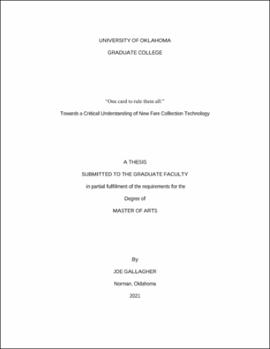| dc.description.abstract | Payments for public transit are changing, as agencies adapt to the near-ubiquity of smartphones as well as credit- and debit-cards in order to secure fare revenues. These developments have enabled many transit agencies in the U.S. to implement new fare collection technology (NFC). Previous forms of fare collection, which relied on paper tickets, tokens and magnetic-striped cards, are giving way to “automated” and “smart” modes of payment via smartcards and mobile apps. In their roll-out of these technologies, transit agencies typically claim that they will operationalize “convenient” and “seamless” forms of mobility through their chosen mode of fare collection. However, these technologies serve instead as a “fix” for transit agencies, which employ light infrastructure investments that support a market for private mobility services. While NFC technology shapes public transit to serve capitalist imperatives, it also must contend with the social infrastructures which also shape urban mobility. | en_US |
